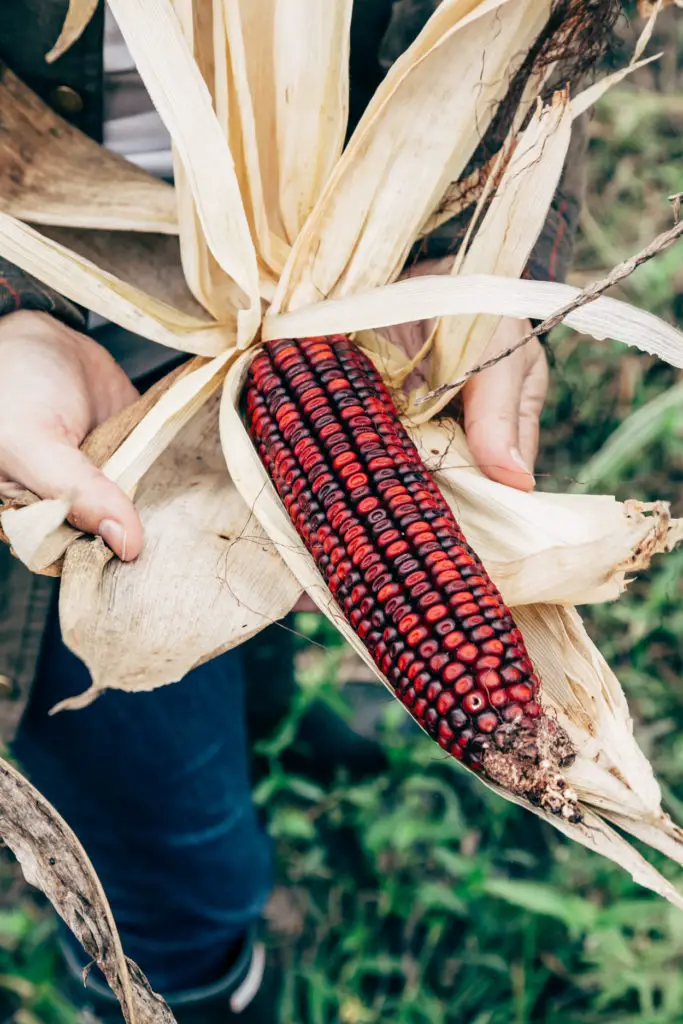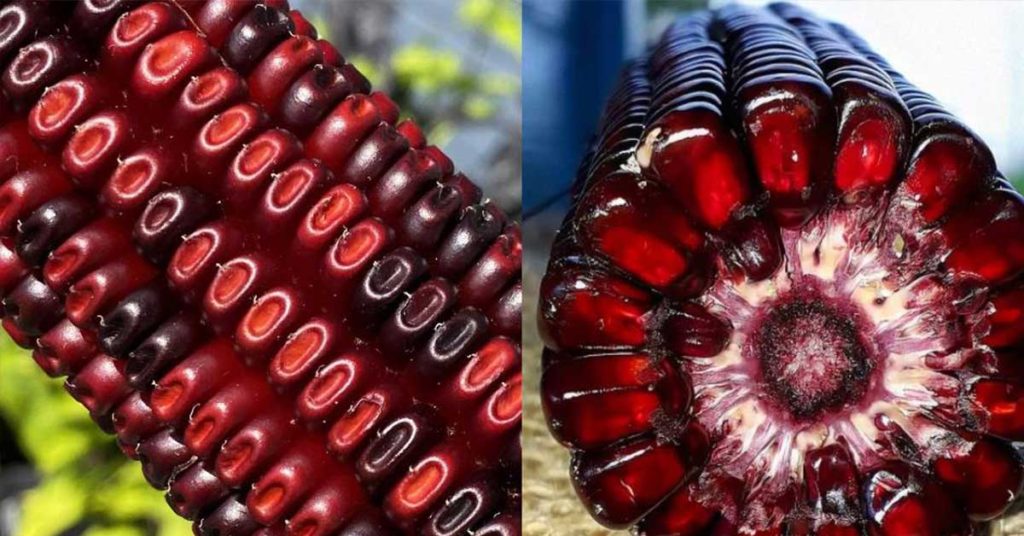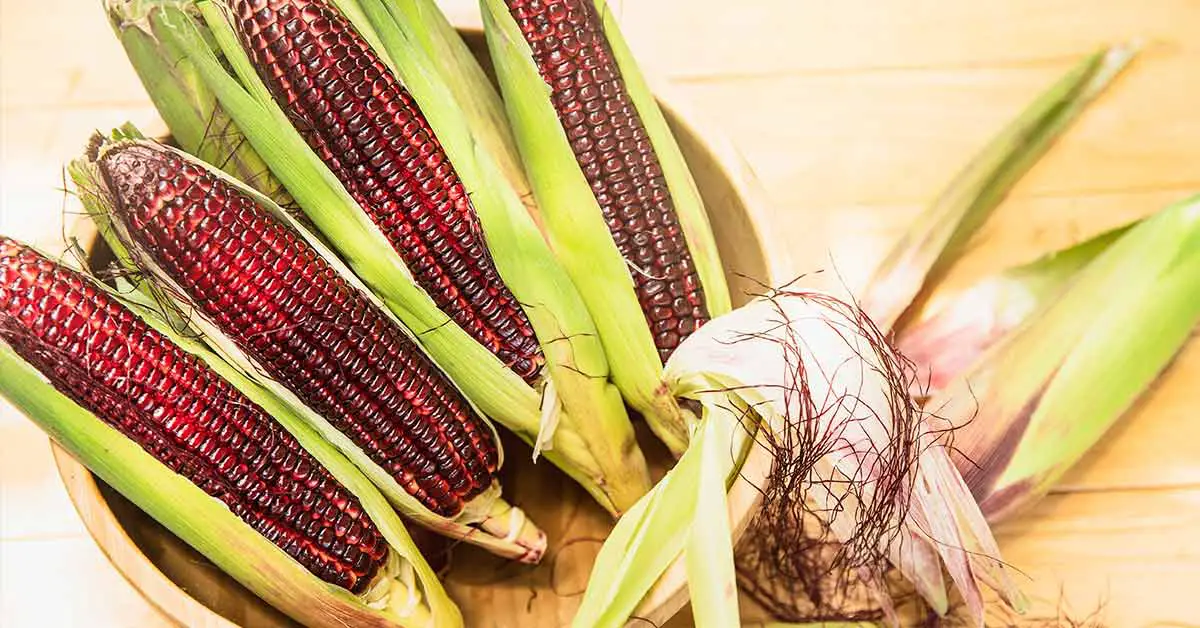Back around the turn of the century, a special “dent” corn known for its red color that almost made it look like rubies traveled from the Appalachia to the islands of Charleston, South Carolina. Who was particularly interested in this beautiful, bright red corn? Bootleggers, that’s who. They knew that the red pearls made the best whiskey around. Thanks to them they ended up saving the varietal. (1)
Bootleggers Saved Red Corn From Extinction
The vibrant red corn, known by distillers for its rich and oily germ, was a favorite of bootleg whiskey makers on James Island, South Carolina. They used it to make what they called Jimmy Red Hooch. Jimmy Red Hooch was an incredible-tasting local moonshine whiskey.
“In the 1980s, you used to be able to go to James Island,” recalls Glenn Roberts, founder of heirloom seed purveyor Anson Mills. “And, if you knew the right people, they’d sell you delicious food out their backdoor kitchen and you’d get a jar of Jimmy Red hooch with it. But though I knew the hooch, I never knew the corn.”
While the corn was a favorite amongst moonshine makers, no one else really knew it existed until the early 2000s. The last bootlegger who grew the corn died and therefore the red corn nearly did, too. Someone saved two ears from his plot and gave them to famous seed saver and local farmer Ted Chewning.

Rescuing The Red Corn
Ted Chewning is certainly famous for rescuing seeds from near extinction. The man has revived countless corn varieties, heirloom radishes, watermelons, beans, and field peas. This is why they gave him the last two ears of Jimmy Red. He grew and saved kernels every single year until he had brought the corn back from the brink.
Still, the red corn wasn’t yet well-known. Somehow, the rich flavor and gorgeous color of the kernels got out and the corn skyrocketed to culinary stardom. Top chefs wanted it to add color and pizzaz to their dishes. Whiskey distillers wanted it for the rich, smooth whiskeys that the corn made.

“It behaves like no other corn I’ve distilled,” says Scott Blackwell, co-founder of High Wire Distilling in Charleston, S.C. “The pearls of oil on the distillate taste of marzipan and light cherry — not corn.”
Now, chefs at high-end restaurants are using it for items like grits. In many cases, this is the first time that they’ve ever included dishes like this on their menus.
“When you open the bag to decant them, this wonderful nutty aroma wafts out,” says Chef Forrest Parker, chef de cuisine at The Drawing Room, at the Vendue Hotel in Charleston’s historic French Quarter. “The grits pair really well with brown butter sauces at dinner.”
Gorgeous But Demanding
The corn itself is not necessarily a hands-off crop like its cousin, yellow dent corn. It is very easily pollinated, meaning that it can be pollinated and therefore contaminated by other pollens that blow into the fields. To maintain its purity, wax-coated bags are placed over the plants’ reproductive parts and the farmer then hand-pollinates them when they are ready.
Jimmy Red corn makes the best whiskey – there’s no doubt about it. In fact, they were so sure that Clemson University received a grant check to grow the corn and truly drag it as far away as possible from extinction.
“Right away I could tell it was very different,” says Scott Blackwell of Highwire Distilling. “Super earthy. Super sweet. Like banana laffy taffy.”
Changing How We Think About Corn Whiskey
Now, distillers are discovering that, much like wine, the soil that the Jimmy red is grown in also very much affects the flavor. It is for this reason that distillers are beginning to pay closer and closer attention to what kinds of corn they are making their whiskey from and what kind of soil and climate that corn is being grown in. (2)
“How you pursue flavor in whiskey is a quilt that’s stitched together, and anytime you pull one of those threads, the entire design shifts,” said head distiller from Firestone & Robertson Rob Arnold. “Everyone has a chance to shift the quilt a little bit. It doesn’t mean you’re going to create an entirely new whiskey. It constantly allows us to shift and evolve our flavor to dial in quality, to dial in diversity. It’s one part of the flavor puzzle.”
So essentially, this little-known corn that bootleggers grew for years to make moonshine in South Carolina is now changing the whiskey game across the country and maybe even around the world. Interested in trying the whiskey that (slowly but surely) everyone is talking about? Try this Jimmy Red Straight Bourbon Whiskey from South Carolina’s High Wire Distilling Co. If you can get your hands on a bottle, be sure to sip slowly and take all that this bright red corn has to offer.
Keep Reading: ‘Wine Floats’ Are The New Hot Drink Trend Every Wino Needs to Know About
Sources

